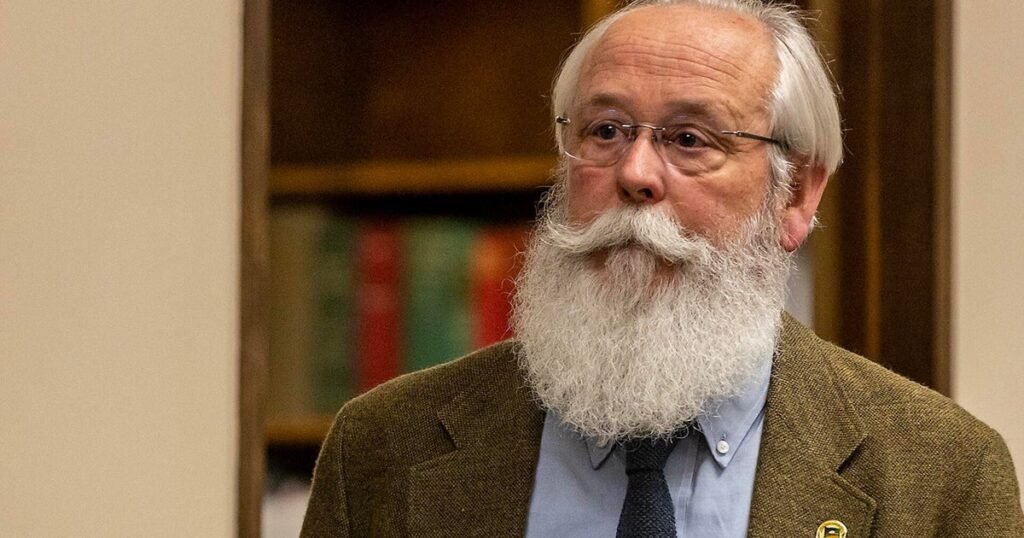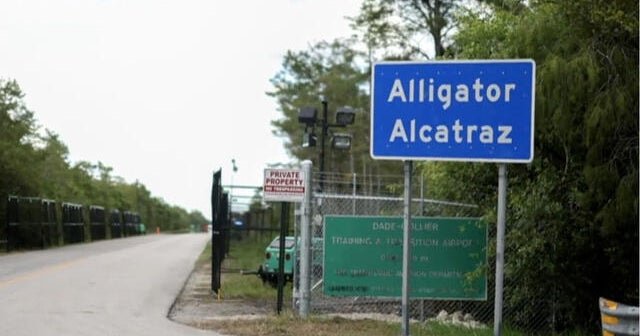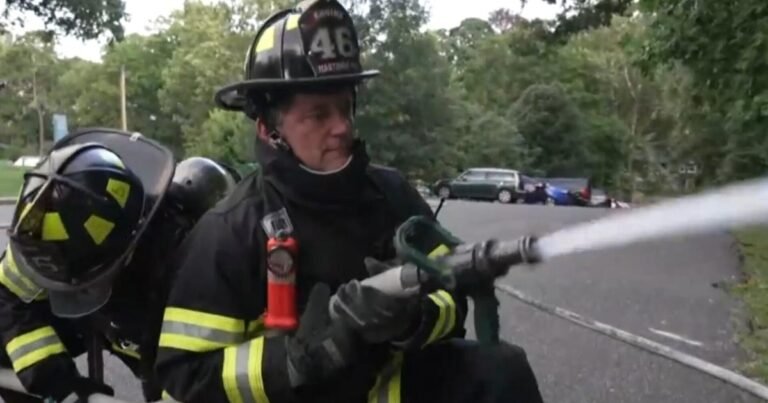
Latah County prosecutor Bill Thompson, the lead prosecutor in the Bryan Kohberger case, spoke with “48 Hours” correspondent Peter Van Sant days after Kohberger was sentenced to four life sentences without the possibility of parole for the 2022 murders of four University of Idaho students – Kaylee Goncalves, Madison Mogen, Xana Kernodle and Ethan Chapin.
In the interview, which was released as a special “48 Hours” podcast, Thompson opens up about the immense pressure of the Kohberger case, the controversy surrounding the plea deal and explains his ” judgment call” on the agreement that didn’t include a requirement for Kohberger to provide a full confession. Read on for an inside look at the case.
Inside the Bryan Kohberger case
Peter Van Sant: What was it like to be the lead prosecutor in the Bryan Kohberger case? A case that captured the world’s attention with seemingly everyone looking over your shoulder and commenting on your every legal move. And how did that plea deal come to be and why was there no stipulation that Kohberger provide key answers?
Today, I’m speaking with Latah County, Idaho Prosecutor Bill Thompson. He has worked on this case from day one.
This is inside the Bryan Kohberger Case, the Idaho Student Murders. I’m 48 Hours correspondent Peter Van Sant.
Peter Van Sant: It is great to be with you, Bill. Thank you for joining us. Can you tell us what it was like for you to be at the center of this case that literally commanded attention all around the world?
Bill Thompson: Well, I didn’t feel like I wanted to be at the center of the case, so it’s really just a team effort. This was a huge team effort. I’ve been the prosecutor here for over 30 years now. I’ve never seen this degree of coordination with agencies like the FBI and the Idaho State Police, as well as our Moscow Police Department.
Peter Van Sant: You’re the quarterback, kind of the team captain and all of that social media pressure. Did you feel that during the course of all of this, did you pay any attention to it or did you try to brush that aside?
Bill Thompson: Actually, I don’t watch social media. We made our decisions based on what the law was and what the evidence was, and frankly, we were pretty successful at insulating ourselves from what the swings of public opinion might be out there on the internet.
Peter Van Sant: Bill, I have to tell you, during that sentencing hearing, I have never, as a reporter who’s been in dozens and dozens of courtrooms, I’ve never seen such emotion as I witnessed during that hearing, both you and the judge were moved to tears. What is it about this case that touches you so personally?
Bill Thompson: Well, it’s just so, it’s so sad in every possible sense. I mean, we’ve dealt with many homicide cases, unfortunately during my time here as the prosecutor. But this one just was so sad, such a loss of life – these young people, you know, four people killed in their home in the middle of the night.
It was just simply cruel and heartless and feeling for those families and feeling for the two surviving roommates my goodness. You know, I was sitting right next to one of them as she was giving her statement, and she asked that we block her view of the defendant. That’s why I was sitting kind of at a funny angle, but that was overwhelmingly powerful – pure honesty and emotion from this young woman and such strength.
Peter Van Sant: And it was remarkable. And, and for Dylan Mortensen, after what she had experienced through social media. She just said it all from the heart. Um, it brought that teared me teared me up. I mean, she was just a remarkable person. What was it like for you to listen to her?
Bill Thompson: Oh, it was, it was almost overwhelming. But I saw her strength and I knew that we needed to be strong with her and for her.
“These murders were brutal”
Peter Van Sant: Bill, you have been in the house where these students were brutally murdered. You saw the blood. You’ve seen what was done to these students’ bodies. How do you describe the crimes that Bryan Kohberger committed?
Bill Thompson: These crimes, these murders were brutal. We’ve seen plenty of homicides and each one is different, but this is one that you’ll never be able to erase from your eyes and from your memory.
Peter: Were you actually inside that house while the victims were still present?
Bill Thompson: Yes. Ashley Jennings, my senior deputy and I were both on scene on November 13th. We were in the house. We were working with the investigators and seeing firsthand what was going on with the crime scene – looked like. It’s part of our philosophy. We work with our officers right from the very beginning um but it brings with it some challenges and this certainly brought emotional, physically emotional challenges with it.
Peter Van Sant: You’ve also been in the same room as Bryan Kohberger. You’ve looked into this man’s eyes and you’ve watched his reactions during these victim impact statements. What did you see?
Bill Thompson: I saw nothing in Bryan Kohberger while the impact statements were going on. It’s as though his eyes were empty.
Peter Van Sant: He made eye contact with, with each of these people, completely unmoved. No reaction, no remorse, no tears. What does that tell you about this man? What is inside him, if anything?
Bill Thompson: I don’t know how to answer that. He’s an enigma to me. The evil that he committed is incomprehensible. In many cases when I’m in court, I’m engaging directly with the defendant. I think I did it once at the sentencing and that was just to point out that he wasn’t gonna leave prison until he was dead and that was it. I don’t care to ever interact with him again. I’d be happy to never hear his voice again, never see him.
Peter Van Sant: Bill, I want to ask you a question. I know you’ve been asked this already a bunch of times but, as you well know, everyone, the families and friends of those students, the public at large, everyone is vexed by the question of why did he do this? Do you have a theory?
Bill Thompson: I don’t know why he did this. Early on in the investigation when we had folks from the FBI’s Behavioral Analysis Unit, their profilers, they were here helping with the investigation in the first few weeks as they were looking at the case, even just the little we knew then they were telling us, in all likelihood, we would never find out or understand why this occurred, and even if the murderer were to tell us the reasons that in all likelihood, it wouldn’t make sense to ordinary people like ourselves.
Peter Van Sant: So we know that Kohberger had done some homework. He’d studied past crimes. Is it within the realm of possibility that for Kohberger this was a thrill kill?
Bill Thompson: I don’t think we can rule out anything. I mean, he certainly is a criminal justice major. He was studying criminal behavior. He studied serial killers. We know that the investigators recovered textbooks on those topics that were part of classes he was taking. He studied how to manage a crime scene, and that was evidence that we were prepared to offer at trial to help explain why this particular crime scene was so clean of incriminating evidence and his car was so clean of incriminating evidence. There was a lot of thought and preparation put into that.
Peter Van Sant: When I talk to people about this case, people know that there are Ring doorbells and security cameras that pick up automobiles in an area. And everyone knows about DNA. How would you describe – he meticulously seemed to prepare for this, and yet he made some mistakes.
Bill Thompson: Well, no plan is perfect and we don’t know what may have changed his plans if it did inside the home, um, because we don’t know who he intended to attack first. We do believe that Xana encountered him while she was still awake. She was up. She’d received a DoorDash order that very likely could have put him into a panic and panicked people make some mistakes or maybe it’s just simply he’s not as smart as he thought he was. We’ll never know for sure and we really don’t need to know for sure. I – we look at, at where this investigation went –they started out with one sample of DNA from a knife sheath. It was from a single male unknown source and the car leaving the scene. That’s what the investigators had. That’s what Kohberger left behind. And from there, the team put the case together to where he was guilty beyond a reasonable doubt. There’s no question.
Peter Van Sant: You know, in those weeks after the murder, when the public was getting more and more frustrated that they felt as though no progress was being made. In fact, progress was being made, it’s just, you can’t reveal it, right?
Bill Thompson: Correct. Yes. We – whenever investigation’s going on, the investigators aren’t gonna compromise what they know. That’s important – to protect the quality of the investigation. It was a bit satisfying when we finally were able to come public with the charges and the basis for the charges and to see the skeptics out there, scratch their heads and say, “Oh yeah, these folks really did know what they were doing.”
Peter Van Sant: I know you’ve talked about this quite a bit, but the fact that the defense team came to you seeking a deal, doesn’t that mean that you had the leverage in this case? That essentially you were holding all of the cards – that since Bryan Kohberger clearly now wanted to live. So help me out on this ’cause even the President of the United States weighed in on this issue. Why didn’t you put a stipulation into this deal where Kohberger would have to have honestly answered all questions about these murders to the satisfaction of detectives before this plea could be finalized? Why didn’t you do that?
Bill Thompson: Well, and you know, Judge Hippler talked about this at the time of sentencing. There is nothing that I believe that Mr. Kohberger could say that would shed the actual truth on what happened. If he were to talk, he would only say things to benefit himself. That would further victimize the families. That’s what we’ve seen repeatedly over the years, and in- particularly, in major cases. Under Idaho law, there’s no way we could compel him to disclose. And if we’d gone to trial, he would’ve never even acknowledged guilt. We would’ve just moved into appeal time. So it was our conclusion that straight up guilty pleas as charged and waiver of appeal for closure, so we have accountability and closure with fixed life sentences was the best course.
Peter Van Sant: Bill, based on my experience and, and with my colleagues on 48 Hours, we cover murder cases for a living, I had a story in which, in a plea deal, the defendant was, it was contingent on the defendant agreeing to show where he had disposed of a body, and a colleague of mine had a, a case in another state where the plea deal stipulated that not only did they have to show where the body was, but give a narrative of how that person committed the crime and it answered all sorts of questions for the families. You guys didn’t – decided not to do that. And why not at least try? I don’t understand that.
Bill Thompson: Well, and I understand what you’re saying and, and I certainly understand and hear from the families and members of the public, who will always have the question, “why?” as we viewed this and looking at the circumstances of this case, it was our conclusion and ultimately my conclusion, I’ll take responsibility – I’m the elected prosecutor, so it stops with me but it was our team’s decision that getting the guilty pleas straight up, factual guilty pleas was going to be the best legal way to approach this. I think that there were concerns that somebody like this particular defendant if he was trying to allocute in a specific factual fashion, he could actually undermine the basis for his plea, and the judge would not have as solid of a foundation to uphold the plea.
So, we analyzed this really from a pretty strict legal factual point of view. It’s not to say that we don’t understand and appreciate folks’ desires to know what really happened, but I have no faith at all that Mr. Kohberger would ever truthfully explain what happened or what he would say would make any sense. And I think that would even further victimize our families.
Peter Van Sant: But why not challenge him on that? Why not see if you might get some honesty from him?
“It was a judgment call”
Bill Thompson: Yeah, I hear what you’re saying, Peter. And, we have considered that and we decided that our best course on this case, with this defendant in Idaho, was to proceed as we did. I’m not gonna say the decision was perfect. It certainly doesn’t perfectly answer everybody’s questions, I realize that. But I also accept that, as I said earlier from the beginning, we were advised by the profiling professionals that even if the person who committed these homicides tried to explain his reasoning and what occurred, that it wouldn’t make sense to ordinary people and that would further victimize these poor families. It was a judgment call. I accept it. It was a judgment call.
Peter Van Sant: Is it true that you are personally opposed to the death penalty?
Bill Thompson: You know, I don’t know that I have strong feelings one way or the other. We’ve had a handful of death penalty potential cases during the time here. We have had one case where the death penalty was imposed and it was thrown out after the Arizona versus – Ring versus Arizona decision came down. And that was a case involving Mr. Dale Shackleford. That was a 10 week trial. And we elected at that point that many years after the fact that it wasn’t realistic to go back to trial just to seek the death penalty. Um, so, you know, we have pursued the death penalty where we think it’s appropriate.
In the cases we’ve had to try…and death penalty eligible, we’ve had it there. We’ve decided each case on its merits and I really don’t have a personal moral feeling one way or another. The law of the state of Idaho is the death penalty is a sentencing option for certain crimes, And this crime would certainly fit the elements of a death penalty case if we’d gone to trial.
Peter Van Sant: How difficult was it for you to take the death penalty off the table in this case?
Bill Thompson: I don’t know how to characterize it as being difficult. Making the decision was difficult because it was a major decision. And it was changing course from where we’d been working for so many months preparing to go to trial. So, we took a step back and look, we being the attorney team, the prosecutor, attorney team and just kind of analyzed each aspect of this case, and we came to the conclusion that if the defendant was prepared to plead guilty, straight up, factually, admit the crimes and agree to waive appeals and we get fixed life sentences, that that was an appropriate resolution.
Peter Van Sant: I’ve always thought that the death penalty in various states is basically reserved for those spectacularly heinous crimes like this one where someone like Kohberger here, here he butchers these four kids shows no remorse. Wasn’t it your responsibility to take this case as far as you could so that he gets the maximum penalty that is in Idaho law? What do you say to that?
Bill Thompson: I would say that it’s my responsibility as a prosecutor to do justice. Prosecutors who blindly go into court on an agenda, I think are doing a disservice to their profession and the public. This case and his actions certainly deserved the death penalty if we had had to go to trial. No question about it.
Peter Van Sant: For Kohberger, in his mind, wasn’t this plea deal a victory? He gets to live.
Bill Thompson: You know, I can’t speak to what’s going on in his mind. I don’t see it as being a victory where he’s going to prison. The only way he’s gonna leave is when he’s dead.
Peter Van Sant: I’ve been in many a maximum security prison and for what it’s worth, they are places of extreme punishment. I’ll put it that way. I can say a lot more than that, but when you park sometimes in the parking lot outside a maximum security prison, and you hear people shouting inside from the parking lot, you know there’s a hellscape behind those walls.
Bill Thompson: You’re right, and there’s something to be said for a person being reminded every day of the punishment for what they’ve done.
Peter Van Sant: Give us a sense of what your closing statement would’ve been if you had an opportunity to sum it all up?
Bill Thompson: Peter. Actually, the best way to look at that is go back to what we did in court on July 2nd in front of Judge Hippler, where we gave the summary of the evidence in this case. And we presented it, I presented it, in a manner very similar to what we have argued, would’ve argued to the jury, would’ve presented in opening statements, and argued and closing arguments.
The length of the evidence here, that once the investigators identified Mr. Kohberger they were able to bring into play not only the DNA match, which was significant in and of itself. It’s kind of tough to explain that away when your DNA is on the sheath of the murder weapon next to the body of one of the victims.
Peter Van Sant: As you know, Bill, jurors want that CSI moment, they call it. And you had one, in this case, you had a CSI moment that was irrefutable.
Bill Thompson: Well, and as the story came out, it really was a multiple CSI moment because we didn’t file charges even though we had a lot of circumstantial evidence until they did the trash pull in Pennsylvania. And we got the paternal DNA match from a Q-tip in that trash pull that said the source of that DNA on the Q-tip is the father of the person whose DNA was on the knife sheath. That was the CSI moment to start for us. That’s what really triggered us being able to get the arrest warrant in place, the search warrants in Pennsylvania, get him arrested, get a direct DNA sample from him and it matched. That was, that was overwhelmingly powerful.
Kohberger’s family
Peter Van Sant: When do you believe the Kohberger family realized that their son was the murderer in this case?
Bill Thompson: I don’t know for sure. When the investigators spoke with them after his arrest, there was nothing the investigators heard or saw to suggest that the family knew that Mr. Kohberger was responsible for this. The information we have and the defense maintained his factual innocence all the way up to the time of the plea, would suggest to us that he never acknowledged guilt to his family quite possibly not until he stood up in court on July 2nd and entered his guilty pleas. As his parents were there at that time, that may very well have been the first time they actually heard it.
Peter Van Sant: Police reports reveal that Kaylee Goncalves had told roommates that she saw a creepy looking man while she was walking her dog, and that roommates returned to find that the front door had been damaged. Do you believe that Kohberger was possibly stalking the house, stalking them?
Bill Thompson: Well, we think that Kohberger was certainly stalking that neighborhood. And we are aware of those incidents where the roommates at the house would, since perhaps somebody was up on the bank behind the house when the dog went out, or, somebody was being followed. The cell phone experts were not able to correlate Mr. Kohberger’s phone being in the area at the time of those occurrences, but they were able to show that he was in that area of some 20 plus times other times at night, between like ten and early morning hours, ten in the evening when there would be no legitimate reason for him to be over here to shop here being Moscow, being in Moscow to shop which was his routine practice. So we certainly believe that those trips were – involved Mr. Kohberger looking and surveilling or stalking, whatever the case may be.
Peter Van Sant: Wanting to see what their living patterns were when they came and went from the house, getting familiar with that neighborhood, things like that?
Bill Thompson: Certainly. And certainly there may have been other potential victims that he was looking at.
Peter Van Sant: The Goncalves family told me in an interview some months ago that they thought he must have been in that house prior to the murders because on the night of the murder, it’s alleged that he had entered that house and gone right up to Maddie – Madison Mogen’s room. Do you think that’s a possibility?
Bill Thompson: It’s possible. We – the investigators never undercovered any evidence that would definitively prove that, but I think that’s a legitimate point. The layout of the house is unique, uh, it’s a little bit confusing. Admittedly, if he was parked up behind the house on that bank, which we believe is where he parked, he would be able to see into the house at night and he would be able to see whose rooms were where. Whether he was actually in the house at some point before November 13th, we don’t know for sure. We can’t exclude that.
Peter Van Sant: Bill, for you personally, what questions do you still have about this case?
Bill Thompson: Well, I don’t have any question about whether we have convicted the killer. I think if there are questions, there are more details that really in the big picture don’t have any significance. Our feeling is that we have accomplished a lot to obtain straight up guilty pleas to all five charges in the indictment and have him spend the rest of his life, not leave prison until he’s dead, with no appeals. So we have that finality for the families and for our community.
Peter Van Sant: And so each night now, Bill, as you put your head on that pillow to go to sleep, are you still preoccupied with this case? Is your heart still broken? Do you still have moments of emotion looking back at this tragedy? For the state of Idaho, for the country?
Bill Thompson: There is never a day that goes by that I don’t remember this and remember what happened to these poor young people, and what happened to their families and their friends and the community. And I don’t know that ever is gonna end. For the past, over two and a half years, I have woken up every night around two o’clock in the morning and will just sit there with this spinning in my head. And I keep a pad of paper and a pen right beside the bed, so I can sit up and write down what’s going through my mind about what we need to do with the case before I fall back asleep and forget it. Tthat’s been our life for well over two and a half years and I think gradually that will change for us, but what has happened in our community with these murders is forever.
“One last message” to Kohberger
Peter Van Sant: And one last message to Bryan Kohberger if he happens to be listening to this?
Bill Thompson: Goodbye and good riddance.
Peter Van Sant: Thank you, Bill Thompson.
Bill Thompson: You’re welcome. Thank you for the time.
Peter Van Sant: And thanks to all of you for listening. I’m Peter Van Sant.



